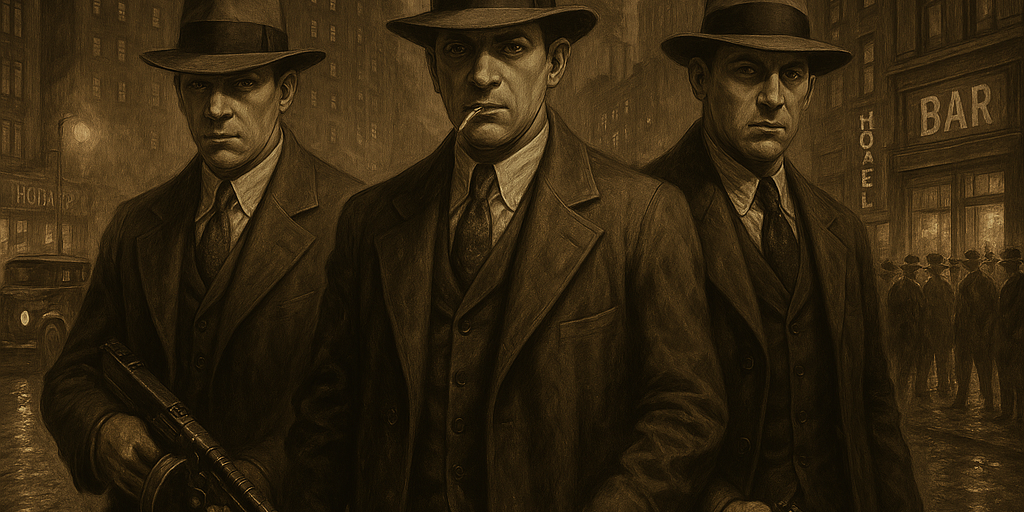During the Prohibition era, Pittsburgh transformed into one of America’s most notorious gangster towns. The Steel City’s roaring furnaces weren’t the only things blazing—gunfire from rival gangs battling for control of bootlegging operations echoed through the streets. Pittsburgh’s strategic position, expansive industrial workforce, and dense network of ethnic neighborhoods created a perfect environment for organized crime to flourish. This article explores the thrilling, violent, and sometimes glamorous underworld of Pittsburgh’s gangsters during Prohibition, tracing their lasting influence on the city’s identity.
Prohibition and the Rise of Gangsters
The National Prohibition Act, or Volstead Act, of 1919 made the manufacturing, sale, and distribution of alcohol illegal across the United States. However, instead of drying up America, it created a lucrative black market ripe for exploitation. Pittsburgh, home to steel mills, coal miners, and thousands of thirsty laborers, provided a steady clientele for bootleggers and speakeasy operators.
Early gangsters like Giuseppe “Joe the Boss” Siragusa swiftly dominated Pittsburgh’s underworld. Siragusa and his contemporaries ran sophisticated networks distributing illegal booze throughout Pittsburgh’s neighborhoods, often clashing violently over territory. Siragusa was assassinated in 1931, exemplifying the brutality that characterized Pittsburgh’s gangster culture during this period.
The Larimer Avenue Gang and the Volpe Brothers
One of the most infamous crime groups in Pittsburgh during Prohibition was the Larimer Avenue Gang, led by brothers Louis and Joseph Volpe. Their criminal empire included bootlegging, illegal gambling, and protection rackets. Operating primarily in Pittsburgh’s East Liberty neighborhood, the Volpes were known for their ruthless tactics and ability to evade law enforcement through bribery and political influence.
A particularly brutal turf war between the Larimer Avenue Gang and rival factions culminated in multiple shootouts and bombings. The violence left an indelible mark on the city, becoming an intrinsic part of its folklore. Despite frequent arrests and trials, the Volpes usually avoided conviction, highlighting the deep-rooted corruption within Pittsburgh’s political and law enforcement systems during Prohibition.
Pittsburgh’s Speakeasies and Nightlife
Prohibition inadvertently boosted Pittsburgh’s nightlife, with hidden speakeasies popping up across neighborhoods from the Strip District to the Hill District. These secret bars provided refuge from restrictive laws, offering illegal liquor, jazz music, and an exciting, illicit atmosphere. The city’s blue-collar workers mingled with gangsters and politicians alike, blurring social boundaries and creating an underground culture rich with fascinating characters and stories.
Establishments like the Original Oyster House, Pittsburgh’s oldest bar, reportedly operated secretly through Prohibition, maintaining a façade of innocence while discreetly serving alcohol. Explore more about the resilience of these bars in our detailed article Pittsburgh’s Oldest Bars and the History Behind Them.
Organized Crime’s Lasting Legacy
By the end of Prohibition in 1933, organized crime had firmly embedded itself into Pittsburgh’s social fabric. The networks established during Prohibition evolved into other criminal activities, influencing gambling, labor unions, politics, and the city’s broader social structure for decades afterward.
One notable figure was John Sebastian LaRocca, who rose in prominence after Prohibition ended, ultimately becoming the head of the Pittsburgh crime family from the 1950s to the 1980s. His influence extended deeply into the political machinery of Pittsburgh, showcasing how deeply intertwined crime and governance had become.
Pittsburgh’s Infamous Personalities
Aside from gang leaders, Pittsburgh’s Prohibition era birthed legendary stories of colorful and infamous personalities. One such personality was Paul “No Legs” Hankish, known for his violent approach and dramatic confrontations. Stories of his exploits became legendary, symbolizing the gritty, uncompromising reality of Pittsburgh’s underworld.
Additionally, the infamous mob enforcer Steve Monastero was feared throughout the city. Monastero enforced order among bootleggers, speakeasy owners, and gambling establishments with ruthless efficiency, contributing to the violent reputation of the era.
Cultural Influence and Modern Perception
Pittsburgh’s gangster history has not only fascinated historians but has also influenced popular culture. Films, documentaries, and literature continually revisit this era, perpetuating its mystique and highlighting the lasting fascination with the city’s dark past. Today, visitors can explore this gritty history through tours, such as a walk through the Strip District, where mob activities were once rampant.
Dive deeper into this fascinating era in our popular feature, Pittsburgh’s Notorious Gangsters and Crime Stories: A Journey Through the Underworld.
Conclusion
Prohibition shaped Pittsburgh in countless ways, but none as dramatically as its descent into organized crime. From violent gang warfare to glamorous speakeasies, this period continues to captivate imaginations and underscore the resilience and complexity of Pittsburgh’s social history. As the echoes of gunfire fade into distant memory, the legacy of Pittsburgh’s gangsters endures, woven into the fabric of the city itself.
Go Deeper Into Pittsburgh’s Underworld
Prohibition may have lit the fuse—but it was just the beginning. Explore the full Pittsburgh Mafia & Crime History hub to trace the city’s criminal evolution through every bloody chapter.
From the ruthless reign of John Bazzano to real-life mob hideouts in the Strip District, this collection reveals how Pittsburgh’s gangland empire grew—and what it left behind.
Explore the Full Crime History →








